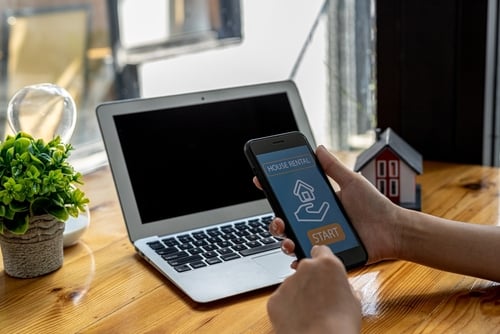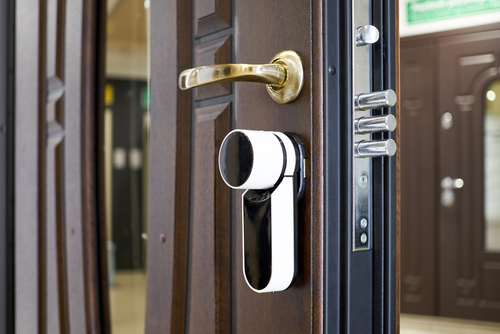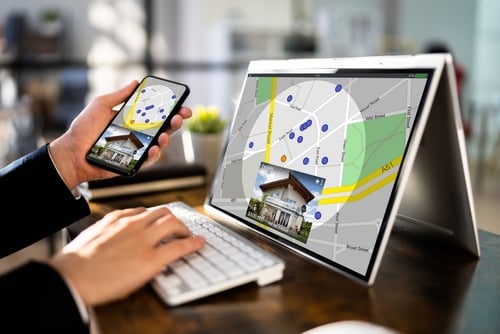
Landlords are undeniably busy the majority of the time. With all of the daily responsibilities it takes to run a rental business, it can seem like there’s not enough time in a day. Luckily, with new technology coming out each year, there are ways for landlords to streamline some of their tasks. For example, self-showing technology allows landlords to show properties to tenants without physically being there. So, if this sounds like something you would benefit from, keep reading to learn about the pros and cons of self-showing technology.
What is Self-Showing Technology?
Typically, when prospective tenants are interested in a rental property, they will tour it alongside a property manager or a landlord. Sometimes, landlords will even leave keys to a vacant property in a lockbox for tenants to tour the place at their own convenience. However, as you can imagine, this self-showing method can create worries for landlords. After all, without meeting the tenants beforehand, you don’t know what their intentions are.

Now, with new self-showing technology, tenants can enter and tour vacant properties more safely and securely. Essentially, with a smart lockbox and special software, landlords can send unique codes to prospective tenants who schedule a property showing.
Then, as part of the rental application process, self-showing software has safety features that require tenant identification before proceeding with the tour. Once a tenant has passed the security check, they are given their unique one-time access code to enter the property.
Once a tenant has used a code to access the property, the landlord or property manager is notified. Each person who enters the property is noted and reported. That way, landlords know exactly who has been in and out of the rental. These reports log everyone from prospective tenants, contractors, property managers, and other employees.
Once a tenant has completed their self-tour, they are instructed to lock up the property and place the keys back in the smart lockbox. Then, they can submit feedback about their tour experience.
Are Self-Showings for Properties Worth It?
In the midst of the COVID-19 pandemic, self-showing technology was an excellent option to keep your rental business moving safely. However, now that things are starting to turn back to normal and we’ve figured out new ways to navigate life, landlords may wonder if it’s worth it to allow tenants into the property alone.
That said, self-showing technology isn’t for everyone. For example, if you like to get to know your tenants personally before renting out your property, then it may seem like a waste to invest in something that cancels out that process. However, self-showing technology can be a considerable advantage for landlords who don’t live near their rental property.
If you’re still unsure, keep reading while we go over the pros and cons of self-showing rental properties.
Pros of Self-Showing Technology
There will always be some pros and cons regarding automation and new technology. However, first, we will dive into some of the pros to self-showing technology:
- Flexible Showing Times- With self-showing technology, renters can view the property when they want.
- More Time for Other Tasks- Landlords can dedicate their time to other tasks without needing to set aside time for property tours.
- Less Time Coordination- Leasing agents and tenants don’t have to go back and forth to find a time that works for both parties.
- Reduced Vacancies- You can reduce vacancy time by showing properties to tenants without much coordination.
- Reduced Tenant “No Shows”- Without having to count on tenants to meet you at a scheduled time for tours, the “no shows” don’t matter as much.
- Immediate Gratification for Renters- Renters can view the property at their pace and make decisions quickly.

Cons of Self-Showing Technology
For landlords who are still wary about the self-showing process, we understand. That said, here are some cons to consider before implementing new technology:
- Landlords and Tenants Must be Tech Savvy- Not everyone is up to speed with new technology, so it may be a learning curve for some inexperienced renters and landlords.
- Unable to Answer Tenant Questions- Without physically being at the property, it’s hard to answer tenant questions quickly.
- Safety Risks- Although there are safety features in place with self-showing technology, there are still risks that someone could damage property or lose keys.
- Tenants Can Only View Vacant Properties- Prospective tenants can only view empty properties since you can’t allow access to units with current tenants living there.
- Monthly Software Fees- You may have to pay monthly fees for the self-showing software in addition to the smart lockboxes.
Is Self-Showing Technology Right for All Landlords?

Now that we’ve gone over the pros and cons of self-showing technology, you may be wondering if it’s right for you. Some business owners may feel pressure to stay up-to-date on all the latest technology. However, it’s best to go with whatever feels most comfortable.
If you only own a few rental properties and find it easy to manage in-person tours, you may not feel the need to implement self-showing technology. On the other hand, you may own multiple rentals and find that it’s challenging to manage your time wisely. In that case, automating the touring process may be highly beneficial.
How to Make Self-Showings More Personal
Perhaps you like the idea of self-showing technology but want to make it more personal for prospective tenants. Luckily, there are a few things that you can do to make the process more friendly and personalized.
First, you can leave prospective tenants a note inside the property with a list of important features and amenities. This may reduce tenant questions and make them feel more in tune with the nature of the property. Also, tenants will appreciate a little introduction, even if you’re not seeing them face-to-face.
Second, you can let them know that you or a leasing agent is available for questions, concerns, or comments about the property during the tour. Extending your time for tenant communication is an important part of being a good landlord. It also shows that you are reliable and knowledgeable about the property and leasing process.
Finally, you can set up an official follow-up meeting to go over their thoughts about the property. For example, you may discuss how the tour went, and whether or not their interested in leasing your rental unit. Making an effort to get to know your tenants before they move in can give you peace of mind. Additionally, it will give you a good idea of who will be occupying your space.
Best Ways to Manage Your Rental Properties
Managing one or more rental properties is not the easiest job. Busy landlords are constantly running around meeting prospective tenants, coordinating property tours, taking care of maintenance requests, and more. That said, self-showing technology is just one way that landlords can streamline their rental business.

Another way to make things easier is by hiring a trusted property management team. Luckily, the professionals at Bay Property Management Group have what it takes to manage all of your rental property needs. We are a property management company offering full services, including:
- Tenant Screening
- Rental Registration
- Rent Collection
- Maintenance
- Eviction Services
- And more!
Contact us today if you could use some help with rental property management in Northern Virginia, Philadelphia, Washington D.C., Baltimore, and other surrounding counties!
